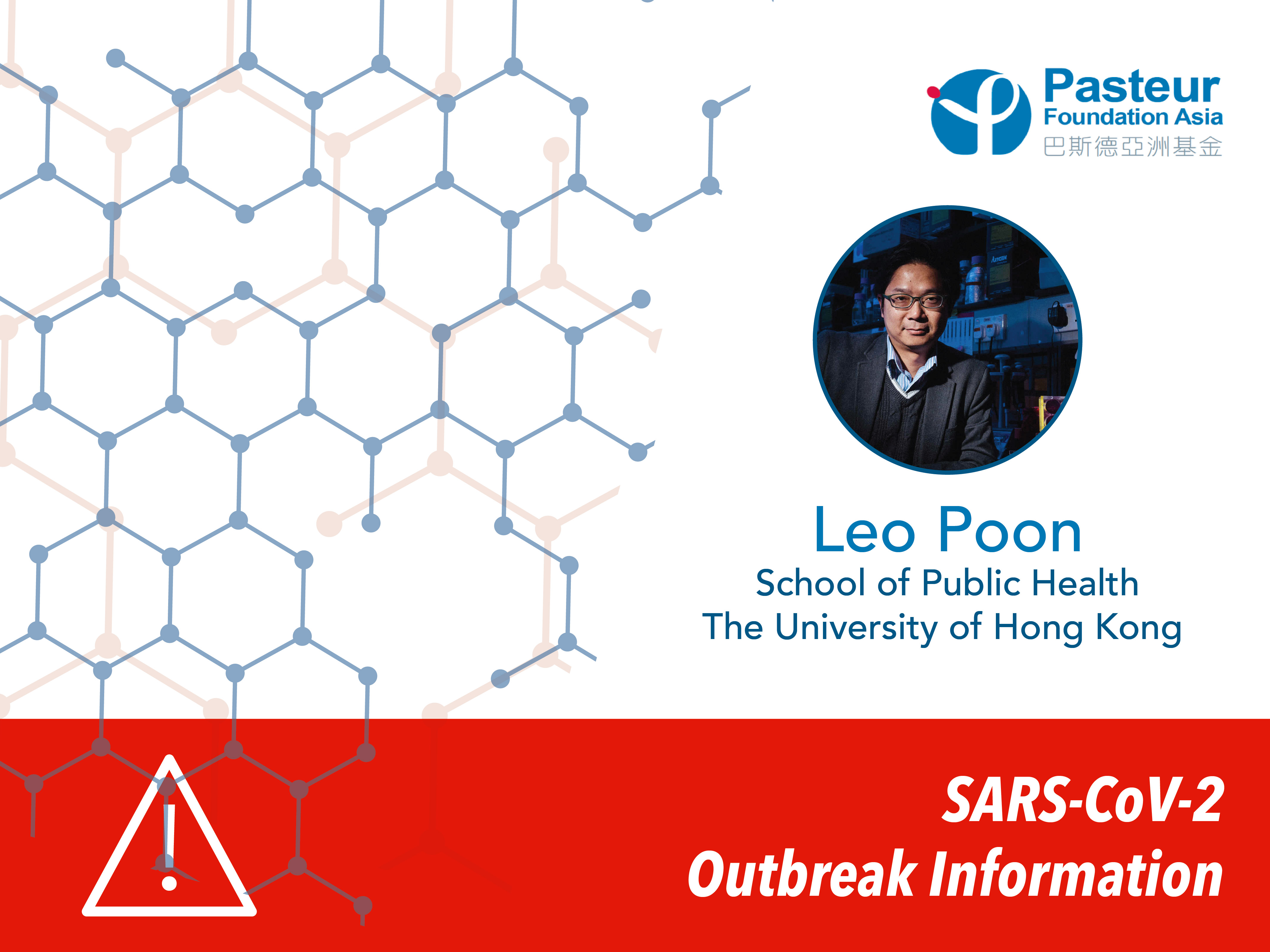News & Updates
Leo Poon: “The path is pretty similar than SARS, but our response is much faster.”
09.03.2020
Professor Leo Poon, from the School of Public Health of the University of Hong Kong, tells us about his work on SARS-CoV-2.

The new coronavirus SARS-CoV-2, identified as the cause of the disease now named COVID-19, that emerged at the end of 2019 in Wuhan, province of Hubei, China, has the undivided attention of the world. The outbreak infected more than 100,000 people all over the world, with more than 3,800 deaths as of early March 2020.
It is a major concern on a public health point of view that mobilizes the whole scientific community to find ways to identify infected patients, implement a cure and develop vaccines.
Professor Leo Poon, from the School of Public Health of the University of Hong Kong, is one of the scientists working tirelessly on those questions. He uses his expertise from SARS and MERS outbreaks to get a better understanding of this novel coronavirus and recently published with Malik Peiris, Co-Director at HKU-Pasteur Research Pole, in Nature about it. He kindly agreed on answering a few questions to Pasteur Foundation Asia about his work.
It is for us, and the whole Institut Pasteur International Network, the occasion to extend our gratitude to Professor Poon for his help in sharing tests and data all over the world, from Morocco to New Caledonia.
Pasteur Foundation Asia: Dear Professor Poon, can you tell us how you first learned about this coronavirus? How did the information emerge in the scientific community?
Leo Poon: We first learned about it at the end of December. There was a rumor saying a SARS-like virus had appeared in Hubei province, in Wuhan. From the information we could have, it seemed like a reemergence of SARS or the apparition of a novel coronavirus.
PFA: Did you immediately thought that the outbreak could be of that importance?
LP: We were obviously very concerned at that time, from our past experience with SARS or MERS.
But at the very beginning there were no case outside the Wuhan wet market, the only cases of infection were related to this specific location. We thought it might only spread from animal to human at this stage.
Once the first human to human transmission was confirmed, we suspected that a new epidemic could occur quite fast.
PFA: With Malik Peiris and your team at the School of Public Health of the University of Hong Kong you have rapidly implemented a molecular diagnosis protocol. Can you tell us more about how to develop such a test, considering the urgency of the situation?
LP: As a research laboratory we are always trying to get prepared for this kind of events.
On the 10th of January we got the first sequence of the SARS-CoV2 genome. With the effort of the teams of the School of Public Health (HKU) we started working on the implementation of a diagnosis protocol right away.
Once we were confident enough that the assays were accurate, with evaluation using a panel of positive and negative controls, we started releasing the protocol. We managed to release it to WHO on the 16th of January, and then to all countries.
PFA: You have very generously shared this protocol with the Institut Pasteur International Network. Can you tell us more about this, and more generally about the importance of sharing information within the scientific community?
LP: In my career I worked on SARS, MERS and other coronaviruses. We know how important identification is in the early stage.
So, of course we shared it to the Institut Pasteur International Network, and other institutes who asked for it. Especially in developing countries, like Cambodia, Vietnam, Madagascar or Senegal, where the Network is well-established.
Those territories need it the most as it can be difficult for them to develop their own diagnosis rapidly, that’s why we sent tests to them to identify the first cases.
PFA: You were actively involved in the discovery of the novel coronavirus causing SARS, being one of the firsts to decode the first SARS coronavirus sequence. Is the present situation comparable with SARS outbreak?
LP: This outbreak follows a comparable pattern as what happened with SARS in 2003. The path is pretty similar, but our response is much faster. For this SARS-CoV2, it only took 2 to 3 weeks to identify the virus.
It is much quicker than before, we now have advanced technologies, and the knowledge that we could gather from studying coronaviruses like SARS and MERS. We learned a lot from those outbreaks.
Biosketch:
In 2003, Professor Poon involved in the discovery of a novel coronavirus as the aetiological cause of SARS. He is one of the firsts who decoded the first SARS coronavirus sequence. These findings allowed him to develop several useful molecular tests for the diagnosis of SARS. The identification of SARS coronavirus in humans and animals also prompted him to hunt for novel viruses in wildlife and this leaded to the discovery of the first and many others coronaviruses in bats. He currently also actively involves in studies related to MERS.
Professor Poon serves as an expert for several international organisations. He is a committee member in the Coronavirus Study Group under the International Committee on Taxonomy of Viruses (since 2006) and he is also an expert in the Influenza Molecular Diagnosis Working Group of the World Health Organization (since 2009). He previously served as an ad hoc consultant for the Food and Agriculture Organization of the United Nations and for the World Organization for Animal Health for MERS surveillances. He is an editor Virus Evolution (2014-now).
More information and publications about Professor Leo Poon on HKU website.
Learn moreBack